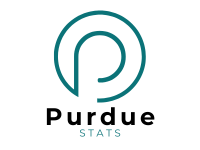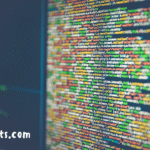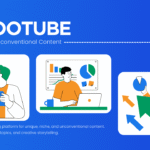
Future Trends in DGH A: What’s Next for the Field?
The landscape of Digital, Global, and Humanitarian Affairs (DGH A) is evolving at an unprecedented pace. As our world becomes increasingly interconnected, the importance of addressing complex global challenges has never been more crucial. DGH A stands at the intersection of technology and human welfare, harnessing digital innovations to create meaningful change on a global scale. But what does the future hold for this dynamic field? With rapid advancements in technology and shifting societal needs, staying ahead requires keen insights into emerging trends. Join us as we explore what lies ahead for DGH A and how it can shape a better tomorrow for all.
Current State of DGH A
The field of DGH A is rapidly evolving. Digital, Global, and Humanitarian Affairs are increasingly interconnected in today’s society.
Organizations and governments recognize the importance of integrating technology into their humanitarian efforts. This shift enhances communication, data collection, and resource distribution.
Currently, there is a heightened focus on sustainable development goals. Many initiatives aim to address climate change while providing aid to vulnerable populations.
Collaboration among various stakeholders—NGOs, tech companies, and local communities—is vital for success. Together they create innovative solutions that tackle pressing global issues.
However, challenges persist. Issues like digital inequality can hinder progress in reaching those most in need.
Despite these hurdles, the commitment to advancing DGH A remains strong as professionals strive to make a meaningful impact across borders.
Recent Technological Advancements in DGH A
Recent technological advancements are reshaping DGH A in significant ways. Innovations in artificial intelligence and machine learning have made data analysis more efficient, allowing organizations to respond to crises faster.
Blockchain technology is gaining traction for its potential to enhance transparency and security in humanitarian aid distribution. This can help ensure that resources reach those who need them most without being diverted or misused.
Additionally, remote collaboration tools have revolutionized how teams work together across borders. Virtual meetings and online platforms enable real-time communication, making it easier than ever for professionals in DGH A to coordinate efforts globally.
Mobile applications are also transforming field operations by providing instant access to information. They empower aid workers with critical data right at their fingertips, improving decision-making on the ground. These advancements signal an exciting future for DGH A as technology continues to drive progress forward.
Impact of COVID-19 on DGH A
The COVID-19 pandemic has reshaped the landscape of Digital, Global, and Humanitarian Affairs (DGH A). It accelerated digital transformation across various sectors. Organizations quickly adopted new technologies to adapt to remote operations and virtual engagements.
Communication tools became essential in connecting teams globally. Collaboration platforms surged in use, fostering real-time interaction among humanitarian organizations facing unprecedented challenges.
Moreover, the crisis highlighted disparities in access to resources. Vulnerable populations faced heightened risks as global systems struggled to respond effectively. This prompted a reevaluation of traditional approaches within DGH A.
Data-driven decision-making gained prominence during this period. Real-time analytics provided insights for better resource allocation and response strategies.
The pandemic underscored the importance of resilience in global cooperation efforts. Stakeholders recognized that adaptability is crucial for addressing future crises within DGH A frameworks.
Future Trends and Predictions for DGH A
The future of DGH A is poised for transformation as technology and human connection intertwine. With the rise of artificial intelligence, we can expect enhanced data analysis that informs humanitarian efforts on a global scale.
Blockchain will play a crucial role in increasing transparency and accountability within organizations. This shift could foster greater trust among stakeholders, ultimately amplifying impact.
Remote collaborations are set to become more sophisticated. Virtual reality tools may allow teams to engage with communities directly, bridging geographical gaps like never before.
Sustainability will also take center stage, prompting initiatives focused on eco-friendly practices in humanitarian responses. As climate change intensifies challenges worldwide, integrating environmental considerations into DGH A strategies becomes essential.
The emphasis on mental health support for frontline workers will grow significantly as awareness surrounding psychological well-being continues to evolve within this field. The convergence of these trends positions DGH A at an exciting crossroads of innovation and responsibility.
Potential Challenges and Solutions
The landscape of DGH A is not without its hurdles. One major challenge is the rapid pace of technological change. Organizations must adapt quickly or risk falling behind.
Data privacy concerns also loom large. With increased digital interaction comes the responsibility to protect sensitive information. Striking a balance between accessibility and security will be vital.
Moreover, collaboration across diverse cultures can create friction. Miscommunication may arise from varying perspectives and practices in humanitarian efforts.
To tackle these issues, continuous training and education are essential for professionals in this field. Emphasizing cross-cultural communication can foster better relationships among teams.
Investing in robust cybersecurity measures will safeguard data integrity while maintaining trust with stakeholders. Adapting agile methodologies might enhance responsiveness to changing conditions as well, making organizations more resilient overall.
How to Prepare for a Career in DGH A
To prepare for a career in DGH A, start by gaining a solid understanding of digital technologies. Familiarize yourself with data analytics, social media strategies, and emerging platforms that facilitate global communication.
Next, consider pursuing relevant education or certifications. Degrees in international relations, public policy, or humanitarian studies can provide essential knowledge. Specialized courses in digital tools used within the sector are also valuable.
Networking is crucial. Engage with professionals already working in DGH A through webinars and industry events. These connections can lead to mentorship opportunities or job leads.
Cultivate soft skills such as adaptability and cultural sensitivity. The field requires an ability to navigate diverse environments and understand varied perspectives effectively. Engaging actively with different cultures will enhance your readiness for this dynamic space.
Conclusion
As we look to the horizon of DGH A, it’s clear that this field is evolving rapidly. The intersection of technology and humanitarian efforts presents both opportunities and challenges. From emerging technologies like AI and blockchain reshaping how we deliver aid, to the lessons learned from global crises such as COVID-19, DGH A is on a transformative path.
Future trends suggest an increased focus on sustainability and ethical practices within digital initiatives. Organizations will likely prioritize collaborative approaches, harnessing diverse perspectives for more effective problem-solving. Preparing for careers in DGH A means being adaptable, tech-savvy, and socially conscious.
Embracing these changes can empower individuals and organizations alike to make meaningful impacts across the globe. Whether you are entering this field now or looking toward future advancements, staying informed will be key in navigating the dynamic landscape of Digital, Global, and Humanitarian Affairs.








